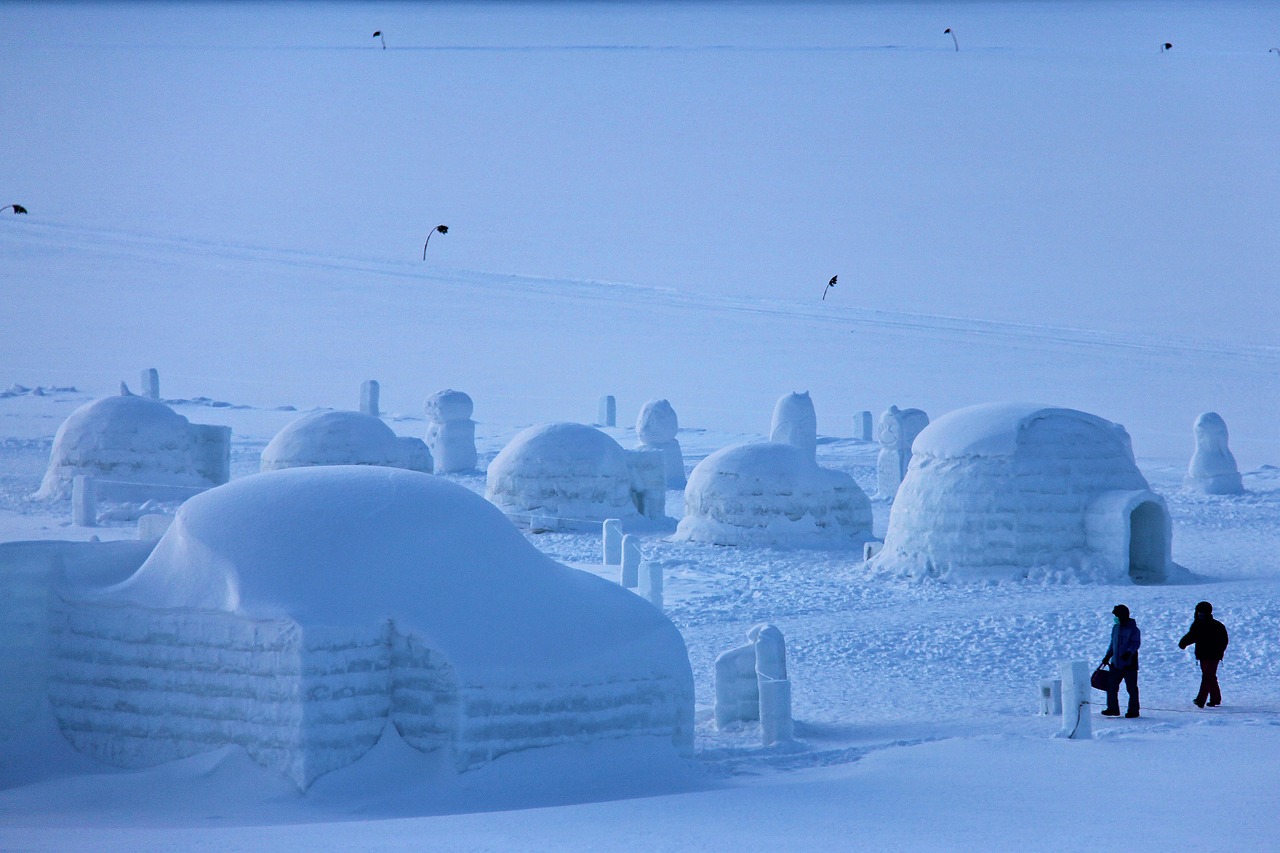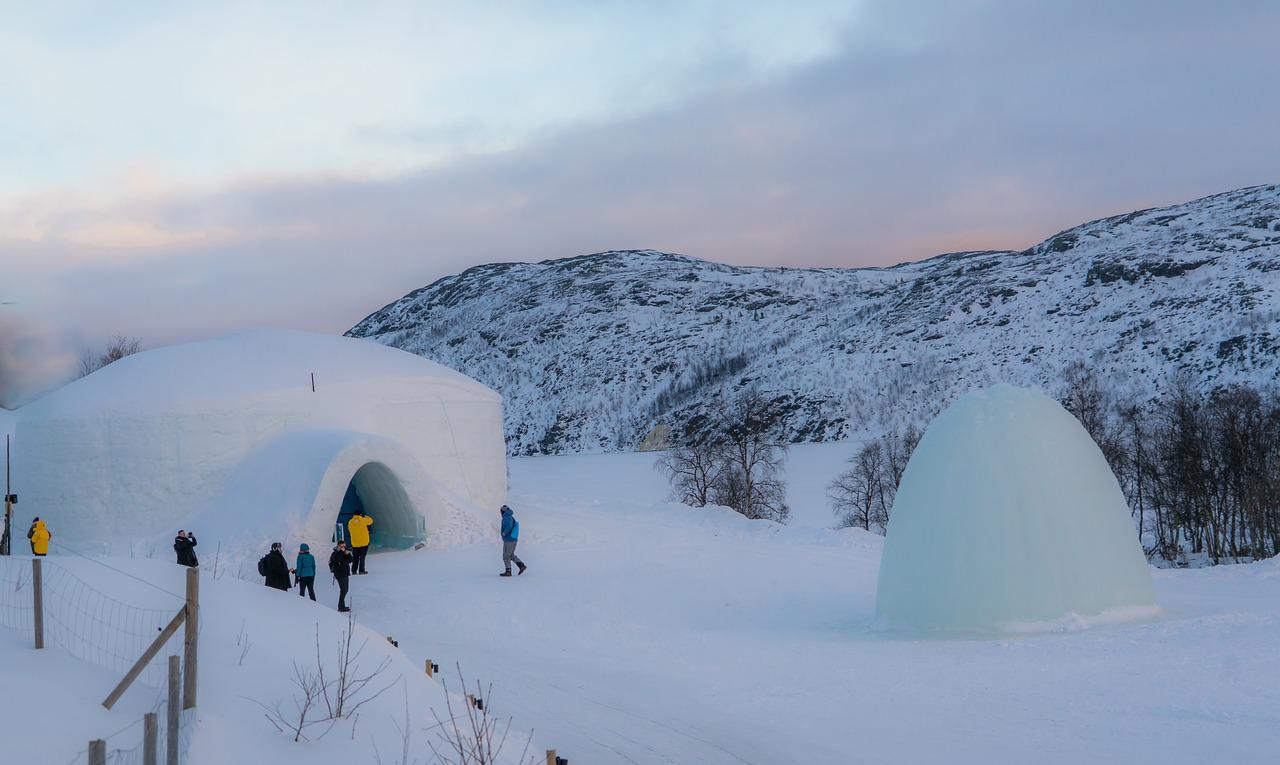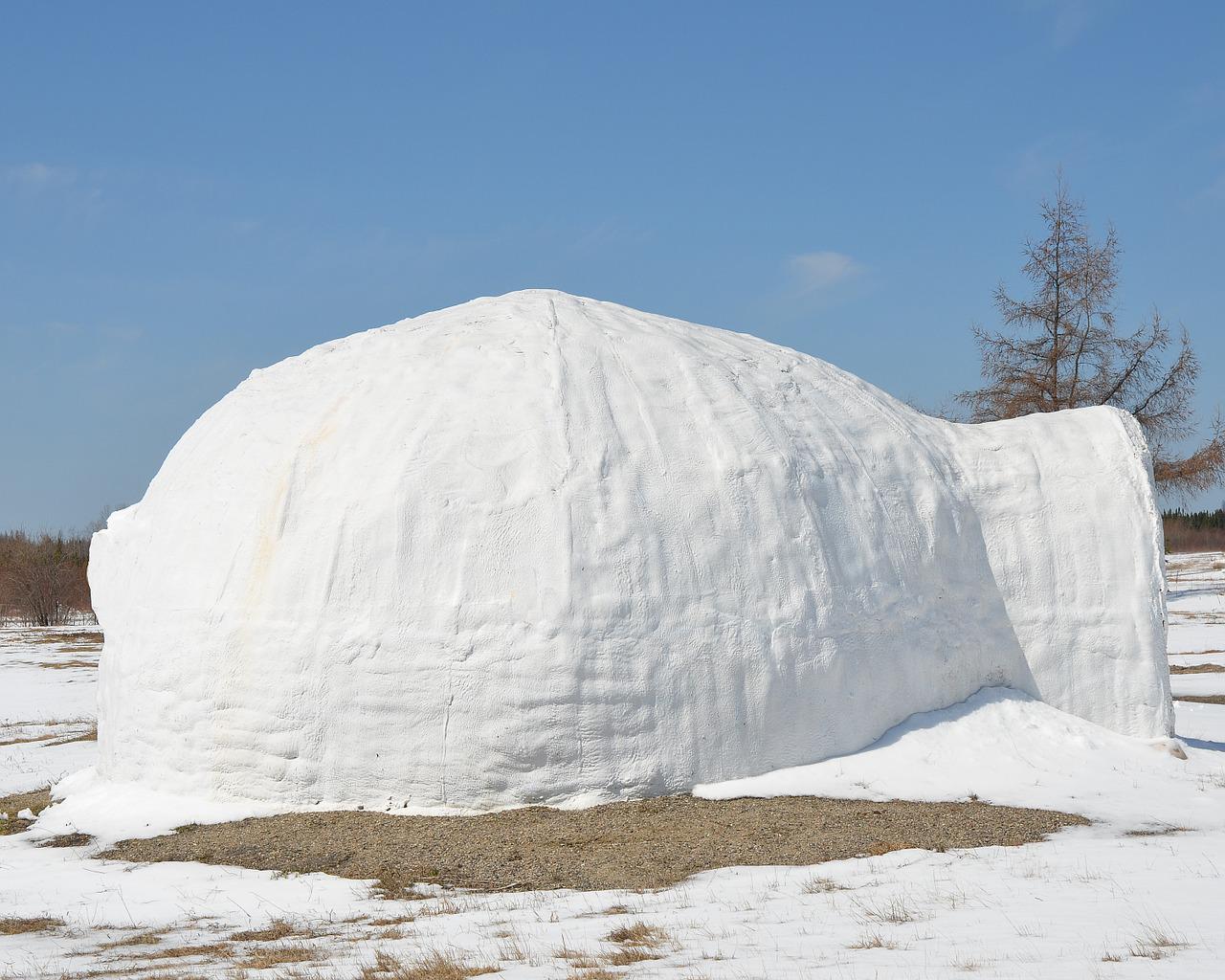Have you always wanted to stay in an igloo as a child? An igloo is a dome-shaped house made from snow and ice in a spiral shape. These houses are built in snowy areas to provide shelter to the people living there. While we all live in brick, wood, cement, and glass houses, to live in an ice house could be really interesting!
But, there is more to an igloo. Here are some Igloo Facts for Kids that might intrigue them.
27 Igloo Facts for Kids
1. Igloos are houses that are built of snow and ice in very cold regions.
2. It is typically shaped like a dome with blocks of ice built up in a spiral shape.
3. The roof of an igloo has a small hole to allow ventilation.
4. It has a short door opening and a tunnel in the front of the dome made to prevent the heat from flowing outside and to keep the igloo warmer than the temperature outside.
5. Sometimes, blankets are hung outside igloos to prevent the cold from reaching inside.
6. It is very interesting to watch the construction process of an igloo. Compact bricks of snow are cut and then used to build the structure without using any cement. The heat produced by humans living inside melts these snow bricks and fuses them together.
7. Igloos are mostly built as camping stations or hunting campsites for humans.
8. Igloos are built as temporary houses by humans and in cases, as permanent abodes as well. Eskimos or the Inuits are a group of native people from the Arctic regions of Greenland, Russia, or Canada, who live in Igloos.

9.They build large igloos as their permanent homes. Sometimes, when a network of families stays close by, they build igloos close to each other connected via tunnels.
10.Some countries have igloo hotels as well. The Kakslauttanen Hotel in Finland has igloos made for visitors to admire the Northern Lights from the comfort and warmth of a glass igloo. These igloos are not made from snow or ice.
11.The arched dome shape is given to an igloo to balance its shape. Such a shape can support itself and remain strong even during storms or powerful winds. This dome shape also provides strength to a structure, along with good insulation due to the minimal surface area of the spherical area.
12.Igloos were used as temporary shelter by hunters when they used to stay days away from home in search of food.
13.Snow is used to make igloos because the air pockets trapped inside to act as an insulator. Even if the temperatures outside are lower than -45°C, the temperature on the inside can be anywhere between -7 to 16 degrees Celcius. This temperature is obtained by human body heat alone.
14.Igloos are in three traditional types, all of different sizes and usage. The smallest igloos were constructed as temporary shelters, usually for a night or two. These are made during hunting trips often on open sea ice. The medium-sized igloos were made for semi-permanent usages, like for a family residing for a few weeks or months. This size was perfect for a single family. Often an Inuit village was formed with such igloos. The largest igloos were constructed in groups of two. One of the structures was temporary and used only for special occasions, while the other nearby structures were built for dwelling.

15.A larger igloo could have also been constructed to connect to several smaller igloos by their tunnels. The larger structures were used to hold community feasts or traditional dances.
16.The snow used to build igloos has to be strong enough to be cut and stacked properly. The best snow for this purpose is usually the snow that has been blown by the wind. This snow can be compact and can interlock ice crystals.
17.Sometimes, a block of clear ice is inserted into the entrance of the igloo to allow light inside.
18.In the past, animal skins were used as door flaps to keep the warm air inside.
19.Igloos used as shelters had beds made from caribou furs and ice.
20.Inuit people can build igloos in an hour’s time.
21.Some igloos can last forever, provided the temperature outside is 0 degrees Celcius or lower, else, it will start to melt.
22.If you light a fire inside an igloo, the ice of the structure won’t melt as it will continuously be losing heat to the outside and retaining its temperature.

23.Igloos keep humans warm by trapping the body heat. Igloos are made from compressed snow. Almost 95% of this snow has air trapped inside. This trapped air acts as an excellent insulator. The trapped air prevents the body heat from getting lost, thereby keeping the person warm. One can suffer inside an igloo due to carbon dioxide poisoning. Normal air has 21% oxygen, but humans can survive if the oxygen level is around 15%.
24.Igloos have raised surfaces inside that act as benches, beds, or for many other purposes.
25.Zermatt in Switzerland has the world’s largest igloo made from 1387 blocks of snow. It took around 2000 hours to build this igloo. This structure was 10.5m tall and 12.9m wide.
26.If an igloo is occupied for some days, the body heat of the inhabitants can cause the snow to melt a bit. But, when the igloo is unoccupied for a few days, the melted snow freezes again. This melting and thawing of snow is good because it makes the structure stronger.
27.The only tools required to build an igloo are snow space and a saw.
Conclusion
We have all had fantasies of living in a snow or ice igloo as children. These interesting facts about igloos give us more information about these dome structures built on snowy terrains. Clever science and minimal technology are used to make these igloos. It is indeed fun to know how Eskimos construct their snowy abode!
